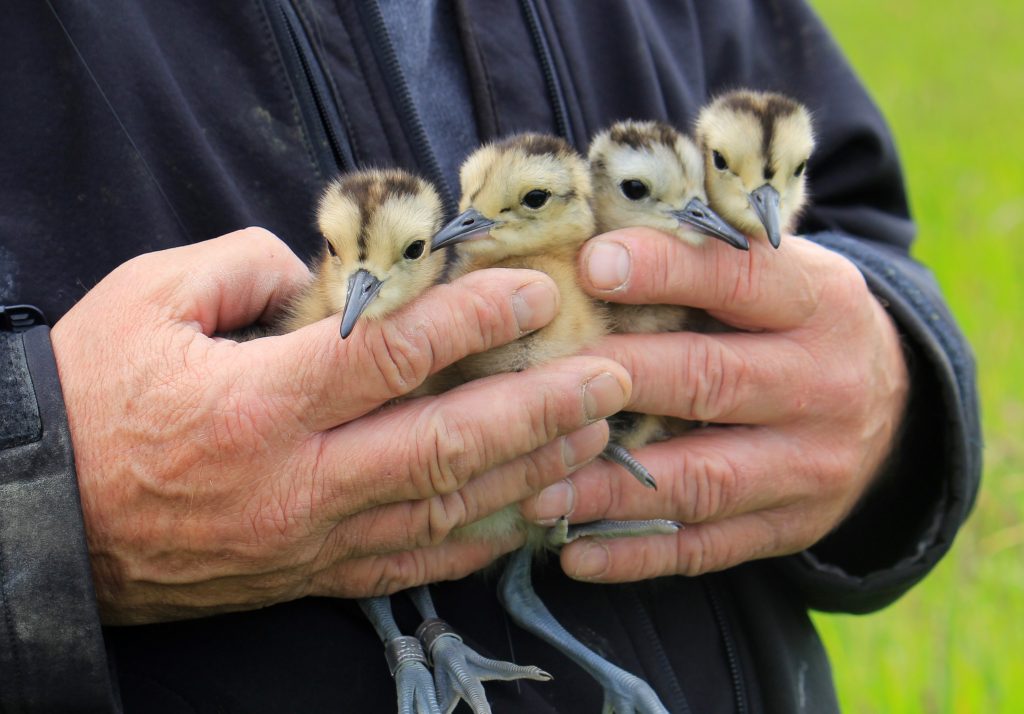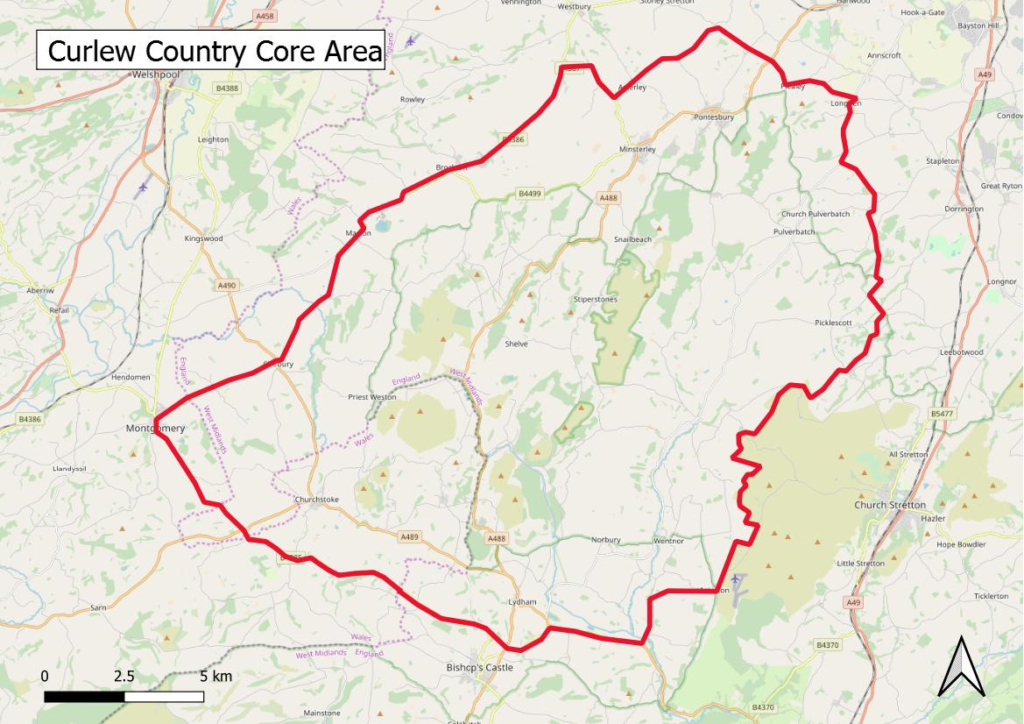About Curlew Country
Curlew Country has delivered real landscape scale conservation on the ground in a short time frame. Based in the Shropshire Hills and Powys borders, we work in close local partnership with land managers, volunteers and the wider community to achieve success. During its first two active years, nest monitoring revealed that no chicks survived to fully fledge from over 30 nests studied. Curlew Country’s pioneering work is helping to stabilise this declining trend toward local Curlew extinction.
Background
Project active since 2015
Pioneered UK firsts for Curlew Recovery
Wide local, national and international engagement
Works with multiple land manager and farmers through a farmer cluster
40+ pairs of breeding lowland curlew – a nationally significant lowland population
149 fully-fledged chicks released into the local landscape since 2017
Helping to stabilise population decline through emergency headstarting interventions and nest protection

Curlew Country is a small independent not-for-profit organisation. It raises all of its income independently. Curlew Country started out as one of multiple projects within the Stiperstones and Corndon Hill Country Landscape Partnership Scheme, hosted by the Shropshire Hills AONB. When the scheme ended the Game and Wildlife Conservation Trust kindly agreed to take over hosting arrangements.
Hosting enables Curlew Country to continue to operate independently given the much smaller scale of focus and funding in comparison to larger organisations.
The Curlew Country core area is a hotspot for curlew. There are only a handful of curlew populations of this size (around 40 pairs) outside upland managed moors and reserves. This nationally significant population of pastoral hill farms and intervening valleys and dales, was once ubiquitous in Shropshire. A decline from around 700 pairs in 1990 to around 160 pairs in 2010 represents a catastrophic 77% decline in this time. Thankfully we are seeing signs that this has slowed since the project’s inception, however there remains a high risk that without great investment into habitat creation and improvement that the short-term interventions aimed at breeding success will not be enough to prevent local extinction. The main drivers have been identified as habitat loss and degradation, as well as increased abundance of generalist predators in the landscape leading to high rates of predation of nests and chicks.

